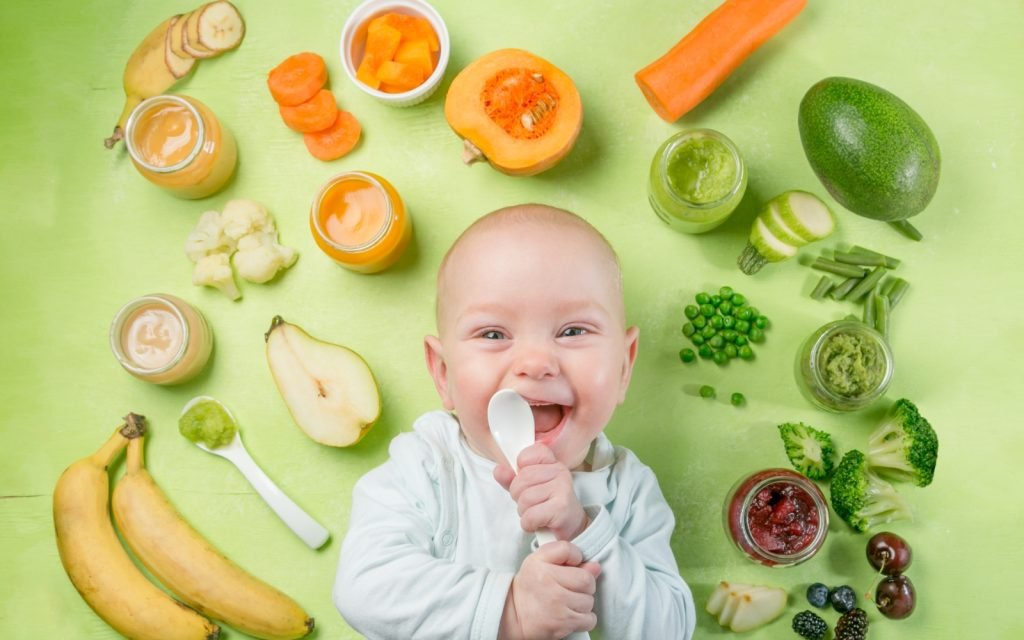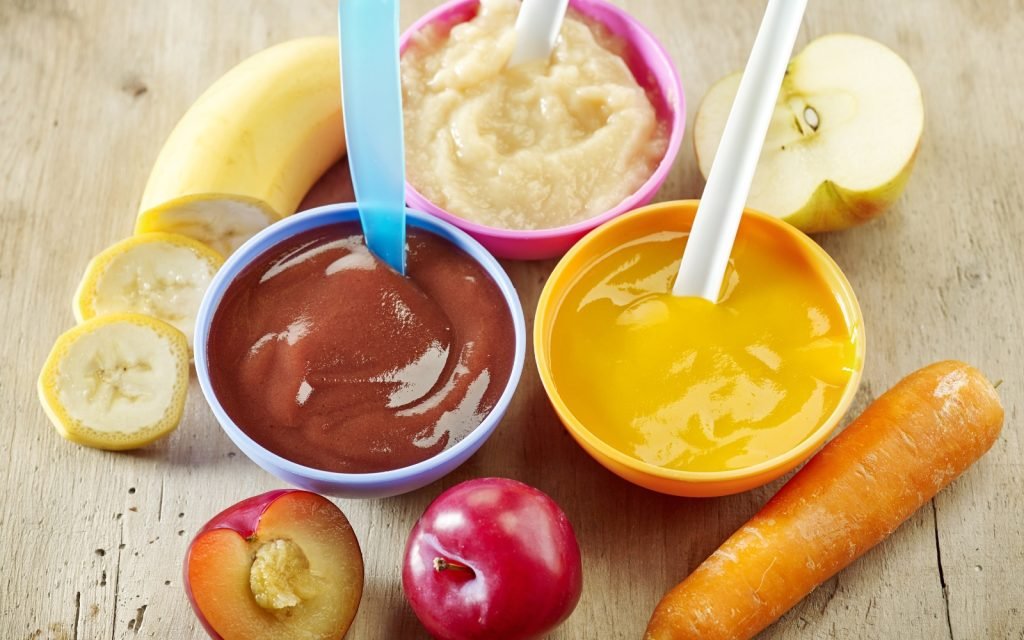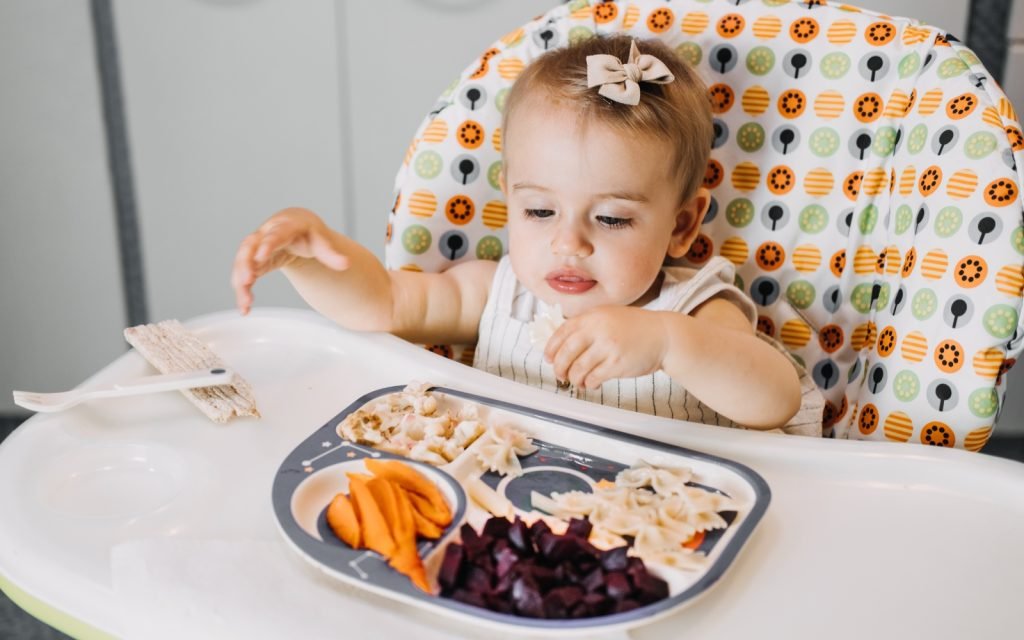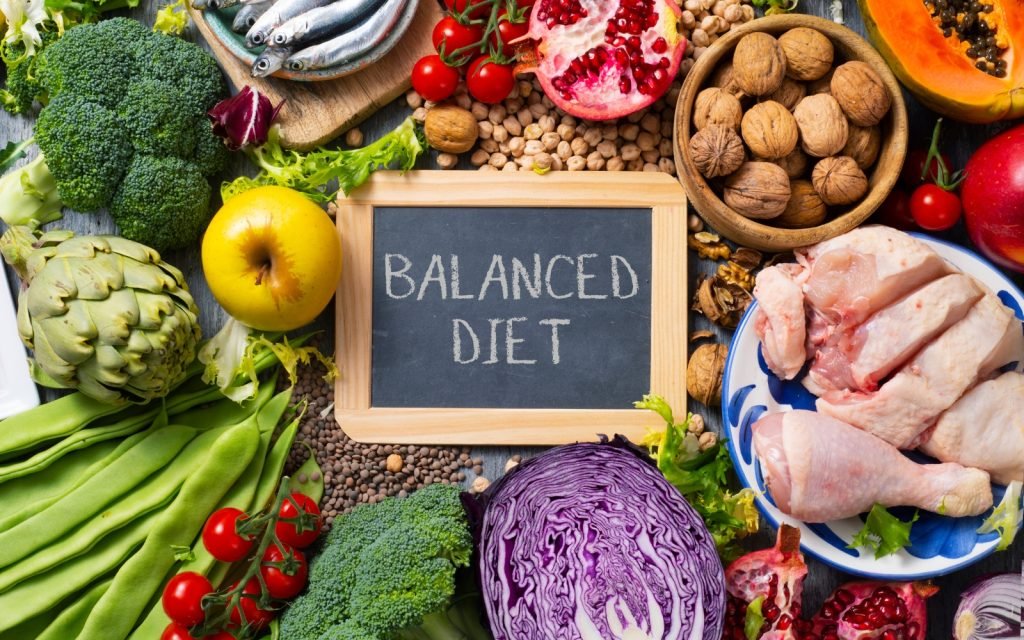Introducing Solid Foods for Babies 2024: A Guide for Parents

Introducing solid foods is a big milestone in your baby’s life. Moving from breast milk or formula to baby food opens up a whole new world of flavors, textures, and nutrients. But with so many questions, from when to start solid foods to how much to give, it can feel overwhelming. This guide will walk you through the essentials, so you can confidently introduce solid foods and set your baby up for healthy eating habits.
Key Takeaways – Introducing Solid Foods for Babies
- Start solids around 6 months when your baby shows signs of readiness.
- Begin with single-ingredient foods like pureed vegetables or iron-fortified baby cereal.
- Introduce new foods slowly to watch for allergies and help your baby learn to accept new tastes.
- Offer small pieces and finger foods as they develop fine motor skills.
- Create a positive feeding environment by keeping mealtime calm and enjoyable.
When to Start Solid Foods for Your Baby

Most babies are ready to start solid foods around 6 months of age. Starting too early (before 4 months) is generally not recommended, as it may lead to digestion and swallowing difficulties. Look for the following signs to know your baby is ready for solids:
- Sits up with minimal support and holds their head steady.
- Shows interest in food, watching you eat or reaching for food.
- Moves food from the front to the back of the mouth, an important skill for swallowing.
- Opens mouth for a spoon or attempts to mouth objects, a sign of readiness for feeding.
If your baby is showing these cues around 4 to 6 months, they may be ready to start eating solid foods. Be sure to talk to your pediatrician to confirm that the time is right for your baby.
Best First Foods for Your Baby

When it’s time to introduce solid foods, start with simple, single-ingredient options that are easy for your baby to swallow and digest. Here are some of the best first foods to try:
- Iron-fortified baby cereal: Rice or oatmeal baby cereal is an excellent source of iron, which is essential for growth and development.
- Pureed vegetables: Carrots, sweet potatoes, and peas are popular choices that are rich in vitamins and minerals.
- Pureed fruits: Mild flavors like banana, apple, and pear are perfect for introducing sweetness without added sugar.
- Protein sources: Small amounts of pureed beans, lentils, or chicken provide protein, iron, and other nutrients.
How to Prepare Baby’s First Foods
- Puree or mash foods until smooth to avoid choking hazards.
- Add breast milk or formula to baby cereal to create a familiar taste and add nutrients.
- Start with small spoonfuls, and let your baby explore the taste and texture of new foods at their own pace.
Keeping foods simple and avoiding added sugar, salt, or seasoning helps your baby develop a natural taste for healthy foods.
Gradually Introducing New Foods

When you introduce new foods, give your baby one new food at a time and wait 3 to 5 days before adding another. This helps you watch for potential food allergies. Some signs of food allergies include:
- Rash or skin irritation
- Vomiting or diarrhea
- Swelling around the lips or face
- Difficulty breathing (call your doctor immediately if this happens)
Common allergens include dairy, eggs, and peanuts. Many experts, including the American Academy of Pediatrics, recommend introducing allergens early, around 6 months, but consult your pediatrician for guidance specific to your baby.
Checklist of Foods to Start With
- Vegetables: Pureed carrots, squash, peas, and sweet potatoes.
- Fruits: Mashed banana, pureed apples, and pears.
- Grains: Iron-fortified rice or oatmeal baby cereal.
- Protein: Pureed lentils, beans, or small amounts of chicken.
Setting Up Positive Mealtime Routines

Creating a calm and positive environment during mealtime can help your baby develop a healthy relationship with food. Here are some tips to make mealtime enjoyable for both of you:
- Use a high chair to provide safe seating with good head and neck support.
- Reduce distractions by turning off screens and keeping mealtime focused.
- Encourage family mealtimes whenever possible; babies love to watch and learn from others.
- Let your baby explore by touching, smelling, and even playing with their food.
Talking to your baby during feeding can also help them feel comfortable and curious about eating. Say things like, “Here comes the carrot!” or “Do you like the banana?”
Transitioning to Finger Foods and Self-Feeding

Around 8 to 9 months, many babies show interest in self-feeding and can start trying finger foods. This stage helps them develop motor skills and builds independence. Here are some safe finger foods to introduce:
- Soft fruits: Small pieces of banana, avocado, or cooked apples.
- Cooked vegetables: Soft pieces of carrot, sweet potato, or zucchini.
- Shredded or finely chopped meat: Tiny, soft pieces of chicken or turkey.
- Baby puffs or crackers: These are designed to dissolve quickly in the mouth, making them safe.
Always supervise your baby while they’re eating finger foods, and make sure foods are cut into small, easy-to-swallow pieces to prevent choking. Foods like grapes, raw carrots, and nuts are choking hazards and should be avoided.
Tips for Encouraging Self-Feeding
- Offer a small spoon and let them practice, even if it’s messy.
- Introduce a variety of textures to help them learn to accept different foods.
- Serve small amounts to avoid overwhelming your baby and to reduce food waste.
Ensuring a Balanced Diet with Essential Nutrients

Introducing solids is an important way to supplement the nutrients your baby gets from breast milk or formula, which remain the primary sources of nutrition up to 1 year. Here’s how to make sure your baby gets essential nutrients:
- Iron: Important for brain development; offer iron-rich foods like baby cereal, beans, and pureed meats.
- Protein: Helps with growth; good sources include pureed chicken, yogurt (after 9 months), and eggs.
- Healthy fats: Essential for brain development; avocado, a little olive oil in purees, or breast milk are good sources.
- Calcium and Vitamin D: Needed for bone health; if dairy is introduced, yogurt and cheese are good options (after 9 months).
Sample Daily Menu for a Baby Starting Solids
- Breakfast: Iron-fortified oatmeal mixed with mashed banana.
- Snack: Plain yogurt with a little pureed apple.
- Lunch: Pureed sweet potato with a spoonful of pureed chicken.
- Afternoon Snack: Small pieces of soft pear or cooked carrot.
- Dinner: Mashed peas and a little avocado.
Important Food Safety and Choking Prevention Tips

Safety is a top priority when introducing solid foods. Here are some essential tips to help prevent choking:
- Cut foods into small, soft pieces that are easy to swallow.
- Avoid hard, sticky, or round foods like whole grapes, nuts, and large chunks of meat.
- Always supervise mealtimes and encourage your baby to chew carefully.
If your baby has trouble moving food from the front of their mouth to the back, they may need more practice with pureed foods before trying finger foods. Babies younger than 1 year should also avoid added sugar, honey, and high-sodium foods.
Transitioning to Family Meals by 1 Year

As your baby approaches 1 year, they can start eating a wider variety of foods, and you can increase the amount of food they eat. By joining family meals, your baby gets to see and learn from you and other family members. Just be mindful of foods that are not recommended for babies, like foods with added sugar, salt, and processed snacks.
Family Meal Tips
- Offer small portions of family meals without added sugar or salt.
- Avoid fruit juice—it’s best to stick with water or breast milk.
- Encourage a balanced diet with a variety of healthy foods, including vegetables, fruits, proteins, and whole grains.
Summary
Introducing solid foods to your baby is a wonderful and memorable experience. By starting solids at the right time, offering healthy, age-appropriate foods, and keeping mealtime calm, you’re setting a foundation for positive eating habits. Remember to watch for signs of readiness, introduce one new food at a time, and supervise your baby to keep them safe. The journey of exploring solid foods is a joyful time for both of you!
Frequently Asked Questions
When Should I Start Solid Foods for My Baby?
Most babies are ready to start solid foods around 6 months. Look for signs like sitting up, showing interest in food, and the ability to swallow more than just milk or formula.
What Are the Best First Foods for Babies?
Good first foods include iron-fortified baby cereal, pureed vegetables (like carrots and sweet potatoes), and fruits (like bananas and pears). Start with single-ingredient foods to watch for any reactions.
How Do I Introduce Potential Allergens Safely?
Introduce allergenic foods like dairy, eggs, and peanuts one at a time, waiting a few days between each to monitor for signs of food allergies.
What Finger Foods Can I Offer My Baby?
Once your baby can sit and grasp small pieces, try offering soft fruits (like banana), cooked veggies (like carrot), or baby crackers that dissolve easily. Always cut foods into small, safe pieces.
How Can I Prevent Choking When Feeding My Baby?
Ensure food is soft, cut into small pieces, and avoid common choking hazards like grapes, raw veggies, and whole nuts. Stay with your baby while they’re eating and encourage slow chewing.





